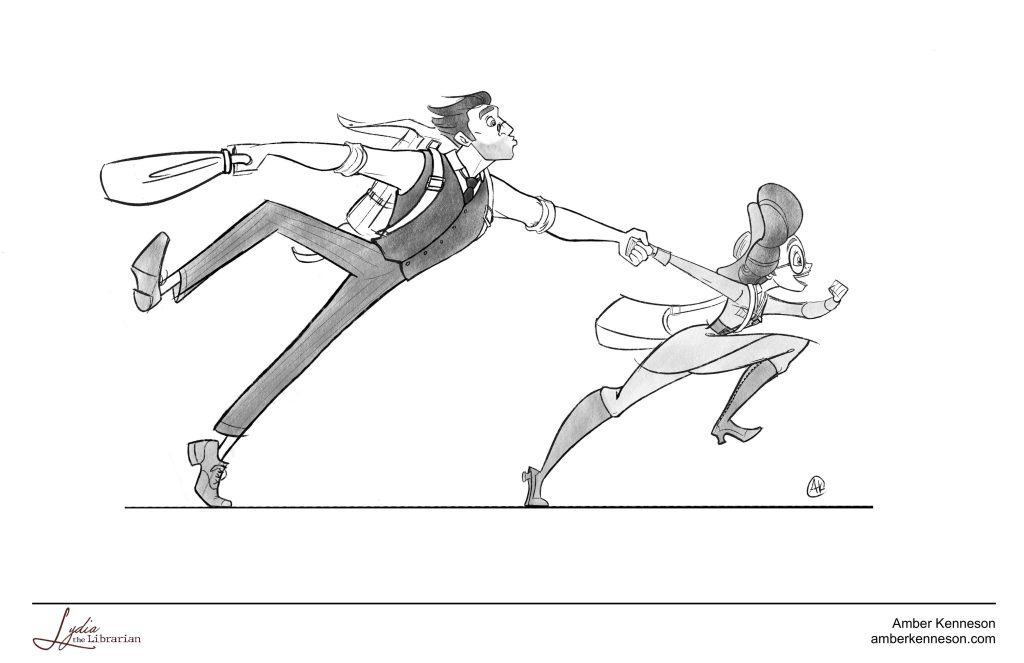Quality Over Quantity: Iterating to Find Your Character
Character designer Amber Kenneson tells us about 8 week her process in of creating a new character in Character Design for Production and why iterating will lead you to undiscovered ideas.
Introduction
I’ve been a freelance character designer and visual development artist since 2010. I’ve worked on several in-development projects for small, independent animation studios. Recently I created character designs for a pitch to Netflix and Disney Jr.; I also art directed the overall style for this project. I chose to take Character Design for Production for two reasons: 1) to build my portfolio, and 2) to get faster at tasks a character designer is assigned on a production (i.e. pose sheets, expression sheets, turnarounds).
Designing a Character With Story

The character I worked on during this course comes from a story idea I came up with a couple of years ago–the first time I took the course! Back in 2017, I came up with this idea of a rare book librarian, Lydia Kensington, who lives and works in England in 1915. When she travels the world to collect rare books and manuscripts, she’s not meeting with collectors over a polite cup of tea–she’s going out to find them herself. I was definitely influenced by Indiana Jones and other adventure stories (my favorite kind). I researched World War I intensely, and have continued to do so. I wanted to continue to develop it, and now, in 2019, I did. The character I designed in this course, Adom, is a curator at a museum of antiquities in Cairo–and Lydia’s main contact in Egypt. The design challenge here was creating a character that belonged in the same world as the original; I ended up reworking both characters multiple times until they felt like they lived in the same world.

Character Pose & Expression Sheets


When I start working on poses and expressions, I prefer to do the rough sketches with charcoal on paper; it feels looser and more free. Then I snap a photo of the page and draw over it digitally. Working fast and loose, I create a lot of roughs–which gives me a lot of options. Ultimately, I pick the ones that tell the story best. Time constraints are a factor as well–as Nate Wragg says, quality over quantity!


Tie Down & Clean-up

Since my character evolved so much from the initial design, and I was also reworking my other character at the same time, I had my work cut out for me this week! Adom’s proportions in my initial rough sketches were too realistic, and Lydia’s proportions were pushed too far on the stylization spectrum (plus there were other nit-picky design aspects I wanted to adjust). I kept adjusting both characters to eventually get them to meet in the middle in terms of style so the characters felt like they belonged in the same world. I was cleaning up pose sheets, expression sheets, and turnarounds for 2 characters. How to present everything was the big decision to make this week. What kind of line? Clean or sketchy? Add tone? Keep just the line? I played with a lot of variations.


From what I’ve heard, I may be in the minority in enjoying turnarounds. They are challenging, yes, but it really works the more technical side of my brain. Plus, as a character designer, it’s important to be able to do them quickly and well!
Putting It Together

For the “movie moment,” I really wanted to convey excitement and adventure in the frame! I also wanted to tell the story of the relationship between the characters, and how they differ in their response to danger. The Egypt setting is (I hope) clearly conveyed with the hieroglyphics and the Anubis statue; and while Lydia is fearlessly reaching for the ancient scroll, Adom, though helping, isn’t exactly thrilled.

Final Thoughts
I don’t design male hero characters often–and I think it can be challenging to make them look interesting. Nate Wragg helped a lot with that. When I was working on the initial sketches and designs in Week 1, I definitely had no idea where it was going to go–no preconceived idea of what the character might look like. I just had to sketch and sketch and sketch and… you get the idea. It was a highly iterative process, as is often the case in production. Going through the steps in the production pipeline and aiming to keep pace with what would be expected on a production (which was my own personal challenge) was a fantastic experience and great for building my portfolio! Nate helped me feel more comfortable and confident in designing male heroes, which I’m sure will come up at some point in my future career!
You can see more from Amber here: https://www.amberkenneson.com/
or follow her on Instagram: https://www.instagram.com/amberkenneson/?hl=en
















